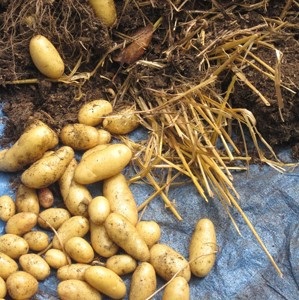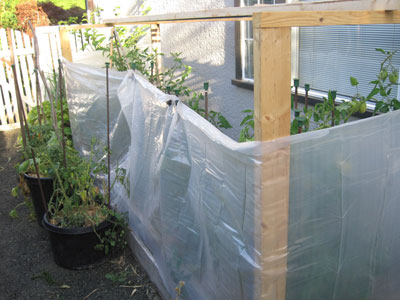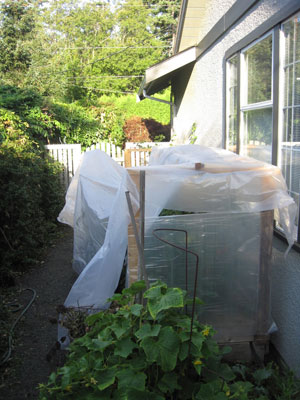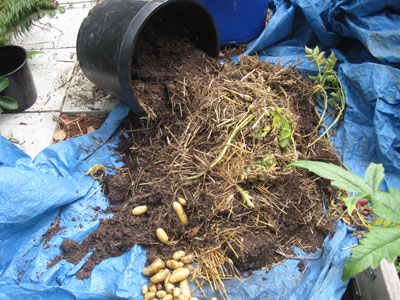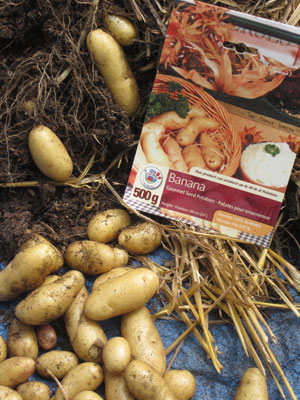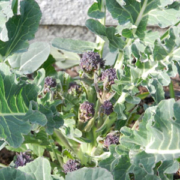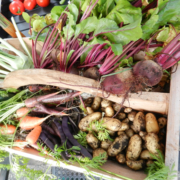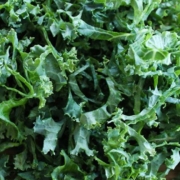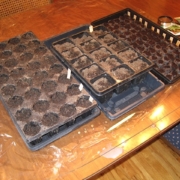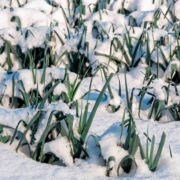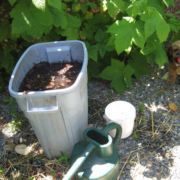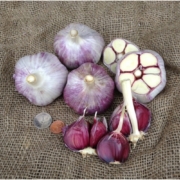Tomatoes, Potatoes and Blight
I know, you aren’t ready to hear about end-of-season gardening yet; the summer has only recently started, hasn’t it? However, the calendar says otherwise; September is here, and we actually had a little sprinkling of wet stuff the other day. ‘Tis the season to worry about late blight in the tomato garden, and if you grow potatoes now is the time to be concerned about next year’s crop as well. Sigh.
Yes, potatoes can be a source of late blight for tomatoes, and any innocent potato left in the ground after harvest can be the source of doom for next year. Potatoes are closely related to tomatoes, and they actually can be carriers of the blight so feared by tomato growers here on the wet west coast, as they are even more susceptible than tomatoes. The official name for this fatal disease is Phytophthera infestans, a fancy name to describe a rapid collapse and rot of the entire plant, so fast that the first blotches on the stems and leaves precede the demise of fruit so fast that no tomatoes can be saved. The risk is in leaving any potatoes not dug; the blight survives in living tissue, so if you find volunteer potatoes growing in the spring, remove and garbage just in case. I know, this is hard to do; any volunteer vegetable feels like a freebie.
The very best way to prevent late blight from attacking your tomatoes is to keep the foliage dry at all times. My tomatoes are grown in a raised bed, so it was easy to build a shelter around the tomato bed to keep warmth in, using a plastic ground sheet from the paint store. For these dewy nights, I cover the top as well, removing the roof in the morning, unless rain is threatening. Ventilation is critical; don’t create a steamy sauna in there! If the top is covered, open up some of the sides when you can.
This time of year it’s all about ripening the tomatoes that have already formed; by now you should have cut off any flowers and excess leaves, and topped the vining plants. Withholding water helps the fruit ripen as well, as the plant gets a little stressed at the idea of not reproducing its seed, and ripens to ensure the continuity of its species. Don’t tell the plants that their seed may not be used for this purpose!
Enough about the worries, and more about what worked! This was my first year of growing potatoes, and I’ll never again be without them. As sunny, well-drained sites are in short supply in my garden, I planted potatoes in huge pots or bins, whatever I had on hand. Harvest time was simple; just dump out the pots and add the soil to any beds where there won’t be potatoes or tomatoes for 4 years. I’ll write more about growing these marvelous little nuggets next spring when the seed potatoes are at the nursery.
Here is Harvest Day in Faye’s Potato Patch:
So what worked in your tomato garden this year? What ripened, and what didn’t?
My first blog was all about what to grow in case we had a cold and wet spring and summer. Well, was I prescient or what? Following my own advice, I grew only tomatoes that ripen quickly, and have been relatively successful. My Siletz are ripening, although the very best for early ripening and excellent flavour have been Enchantment. These seeds aren’t widely available here, but worthy of a search when you are poring over seed catalogues in the coming winter. Sun Gold is another one that has ripened well. I’d love to hear about your successes, and failures too.
As you enjoy the bounty of autumn, make notes on what has worked for you; varieties, conditions, placement for crop rotation, and important dates of planting and harvest. If you don’t have a garden journal, there is no better time to start one than today. OK, remembering to write in it is another matter, maybe I’ll do a blog on that subject!
